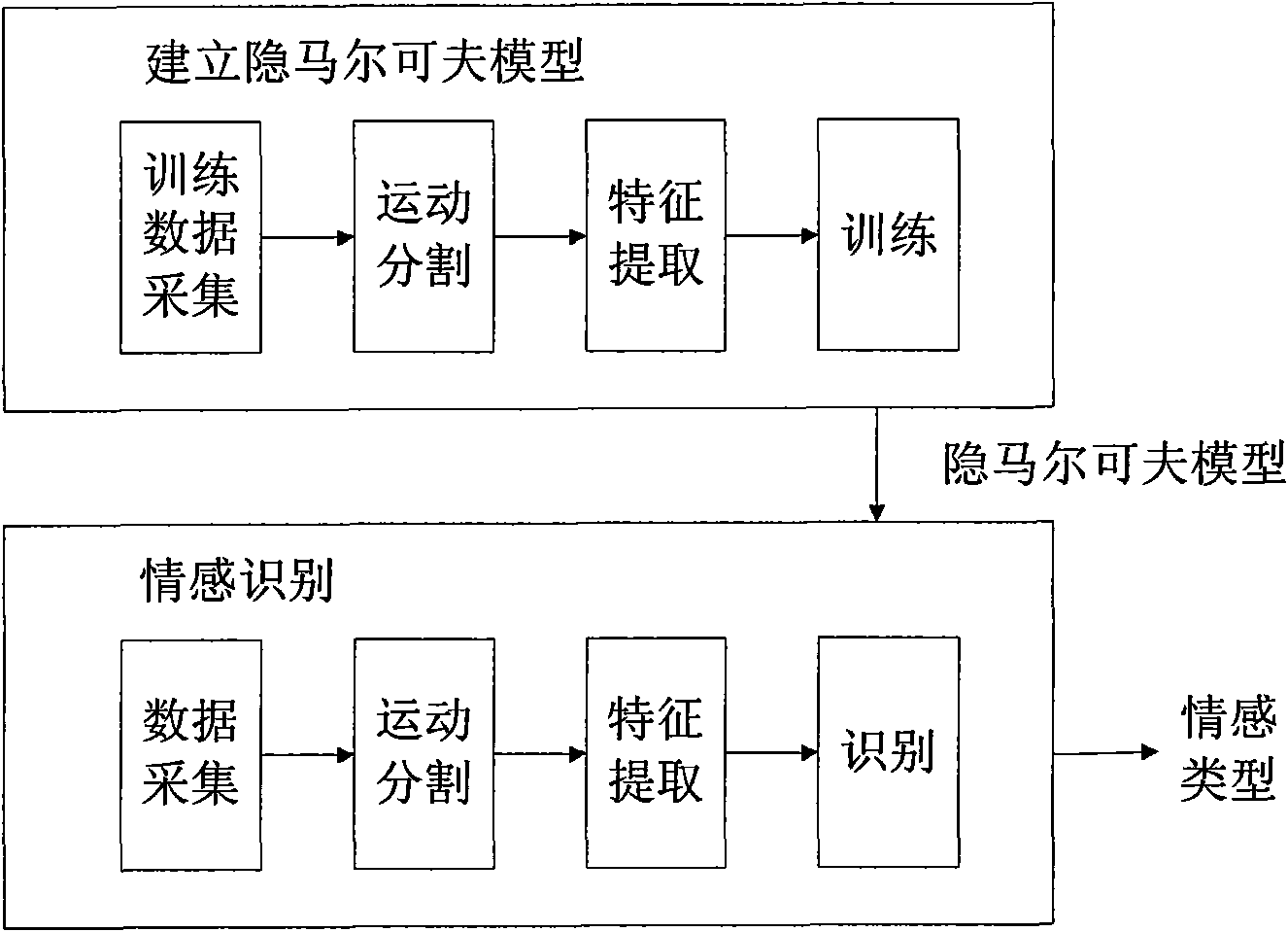Emotion identification method for human non-programmed motion
A technology of emotion recognition and human body, applied in the field of emotion recognition of human unstylized movement, which can solve the problems of low recognition rate and slow learning speed.
- Summary
- Abstract
- Description
- Claims
- Application Information
AI Technical Summary
Problems solved by technology
Method used
Image
Examples
Embodiment
[0061] Example. Recognition of people's emotions from knocking on the door and raising hands
[0062] Since human body movement is mainly body movement, and most people are right-handed, this embodiment recognizes human emotions from the movement of the right hand of the human body.
[0063] The present invention utilizes the human body three-dimensional motion database established by Pollick, University of Glasgow, etc. to collect training samples and test samples. The database has four non-stylized human motion sequences of knocking on the door, raising hands, throwing things, and walking, and four emotional states of happiness, anger, sadness, and no emotion. There are two motion sequences for each emotion, and a total of 240 human motion sequences for one action type. In this example, the motion sequences of knocking on the door and raising hands of 29 characters from 30 characters are selected as the training data set, and the motion sequences of knocking on the door and...
PUM
 Login to View More
Login to View More Abstract
Description
Claims
Application Information
 Login to View More
Login to View More - R&D
- Intellectual Property
- Life Sciences
- Materials
- Tech Scout
- Unparalleled Data Quality
- Higher Quality Content
- 60% Fewer Hallucinations
Browse by: Latest US Patents, China's latest patents, Technical Efficacy Thesaurus, Application Domain, Technology Topic, Popular Technical Reports.
© 2025 PatSnap. All rights reserved.Legal|Privacy policy|Modern Slavery Act Transparency Statement|Sitemap|About US| Contact US: help@patsnap.com



